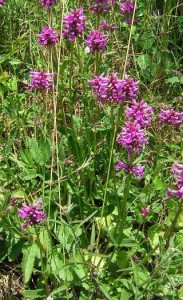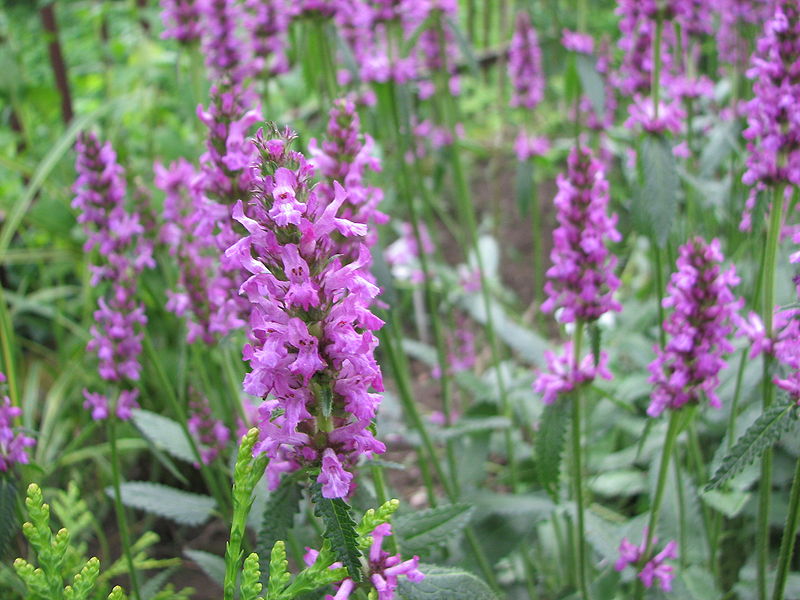 Betony (Stachys officinalis) is one of those herbs that was once in common use but has fallen out of favor with the advent of modern medicine. The Romans listed 47 illnesses that could be treated with betony. It was universally found in medicinal gardens of apothecaries and monasteries. Betony was also believed to have magical properties. It was grown in churchyards to discourage ghosts and worn in amulets to ward off evil. Nowadays, betony is used as a base in herbal teas and by herbalists to treat headaches.
Betony (Stachys officinalis) is one of those herbs that was once in common use but has fallen out of favor with the advent of modern medicine. The Romans listed 47 illnesses that could be treated with betony. It was universally found in medicinal gardens of apothecaries and monasteries. Betony was also believed to have magical properties. It was grown in churchyards to discourage ghosts and worn in amulets to ward off evil. Nowadays, betony is used as a base in herbal teas and by herbalists to treat headaches.
Betony, also called wood betony, bishop’s wort and hedgenettle, is native to Europe, western Asia and northern Africa. It is an herbaceous perennial hardy through zone 4. A member of the mint family, its serrated leaves grow at the base of the plants. The plants should be divided every 3 years or every 5 years if growing in shady conditions. The flowers grow on long stalks that can reach 3’. The flowers themselves range in color from white to purple. They are known as “interrupted” spikes because there is a tuft of blooms at the top of the stalks and then another small group of flowers further down the stalks. Bloomtime is late July through August. They make beautiful additions to cottage gardens and will grow in full sun to partial shade.
It’s easy to grow betony from seed. You can direct sow them in your garden in late summer or early fall for germination the following spring. If you want to start them indoors, they require moist cold stratification. Gently press the seeds into a soilless mix, moisten slightly, cover with a plastic bag to preserve the moisture and then refrigerate for 3 weeks. Check your seeds frequently and moisten with a mister as necessary. Don’t let them dry out while refrigerated. The soil should be moist, not wet. Do not over water or your seeds will rot. Germination should occur in 1 to 2 weeks after the period of stratification is over and you have moved your seeds to a warmer spot. You can transplant your seedlings into your garden in mid-spring. Light frosts will not harm them.
Once full grown, you can harvest the entire plant, leaving at least 4 inches to regrow, or just the leaves and dry them for later use. They should be dried in a cool, dark place or you can dry them in paper bags to keep out the light. Food dehydrators are not recommended to dry betony. Once dried, store the stalks and leaves or just the leaves in glass containers in a cool, dark place.


4 Comments on “Betony”
my wood betony is drooping I believe it is from too much sun. It is June and our days are sunny and warm. I think I should move it to a shady location. It is setting bud. Can I relocate it now
It’s not a good idea to transplant a plant when it is budded. The shock of being transplanted will cause it to drop its buds. It may or may not grow new buds. I would wait until fall to transplant. Spring and fall are the optimum times to be moving plants.
Why is using a dehydrator not recommended with wood betony?
Because wood betony requires slow, cool drying. If dried too quickly, like in a food dehydrator, or in a too warm place, the essential oils which give it its efficacy will be destroyed.